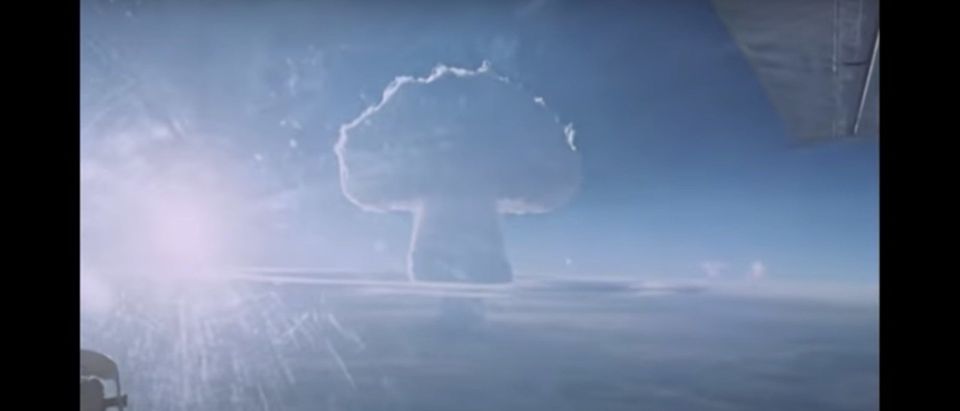Russian state nuclear agency Rosatom released previously classified footage last week of the world’s largest nuclear explosion, when the Soviet Union detonated the “Tsar Bomba” in 1961.
The hydrogen bomb was the most powerful nuclear weapon ever created and yielded roughly 50 megatons of explosives, Reuters reported. The bomb was detonated Oct. 30, 1961 approximately 4,000 meters over the isolated Novaya Zemlya archipelago near the Arctic Circle.
WATCH:
The roughly 40-minute video, which opens with a “Top Secret” title in Russian, shows the preparation for the test along with the 60 kilometer high mushroom cloud formed after detonation.
“The testing of an exceptionally powerful hydrogen load … confirmed that the Soviet Union is in possession of a thermo-nuclear weapon with power of 50 megatons, 100 megatons and more,” a narrator tells the audience in Russian.
Soviet Premier Nikita Khrushchev ordered the development of the bomb — officially named RDS-220 — in July 1961 and reportedly wanted a 100 megaton weapon attached to the thermonuclear warhead, according to the Barents Observer. Soviet scientists reduced the payload to 50 megatons due to concerns over radiation.
The footage was released to mark the 75th anniversary of Russia’s atomic program and captured the explosion from various angles on the ground and from the sky, according to Reuters. (RELATED: Russia Reportedly Conducting Low-Yield Nuclear Tests)
The “Tsar Bomba” was more than 3,000 times as powerful as the atomic bomb dropped on Hiroshima, Japan and more than three times as powerful as the largest hydrogen bomb ever detonated by the United States in 1954, according to The New York Times.
The hydrogen bomb was developed between 1956 and 1961 when the Soviet Union and the United States were engaged in a nuclear arms race. “There was a megatonnage race — who was going to have a bigger bomb,” historian Robert Norris told The New York Times. “And the Soviets won.”












